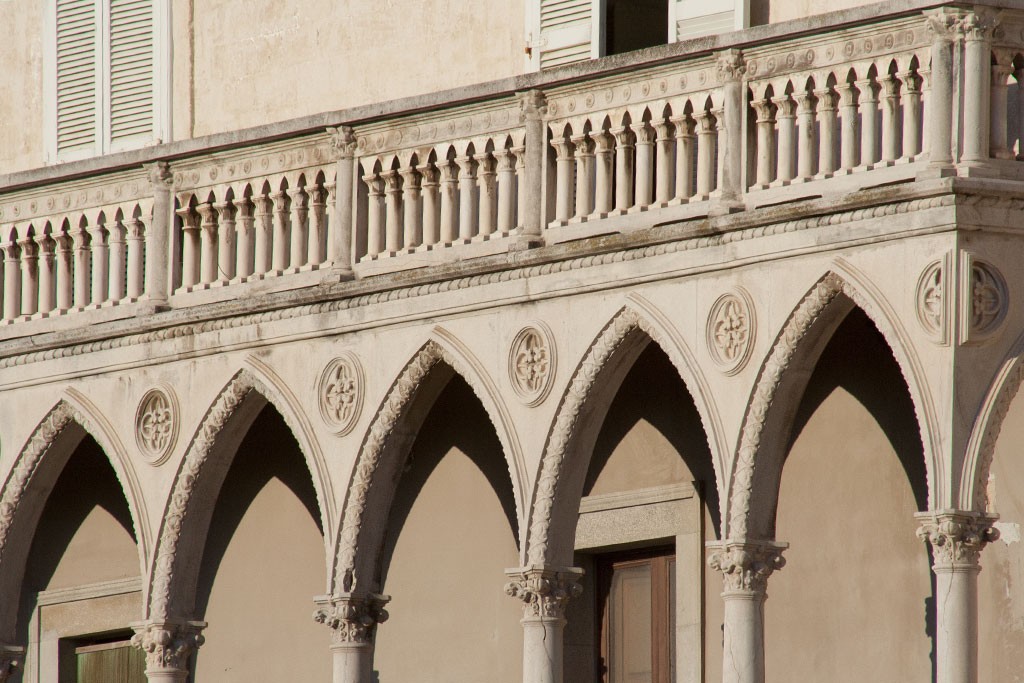Together with the castle this palace is undoubtedly the most photographed site of the port. This beautiful palace including the part which overlooks the “old port” was built in the 18th Century along the city walls (part of which are still intact). Built in Neo-Gothic style the loggia overlooking the sea has 8 pointed arches (the same as the entrance in Via Comes 26 and the semi-circular balconies on the first floor).
The long facade from numbers 20 to 36 retain the 17th Century door windows whereas on the seafront side there are others with pagoda shaped gables. Beyond the atrium is an elegant 18th Century gallery style staircase. A fine window and French doors embellish the rooms.
